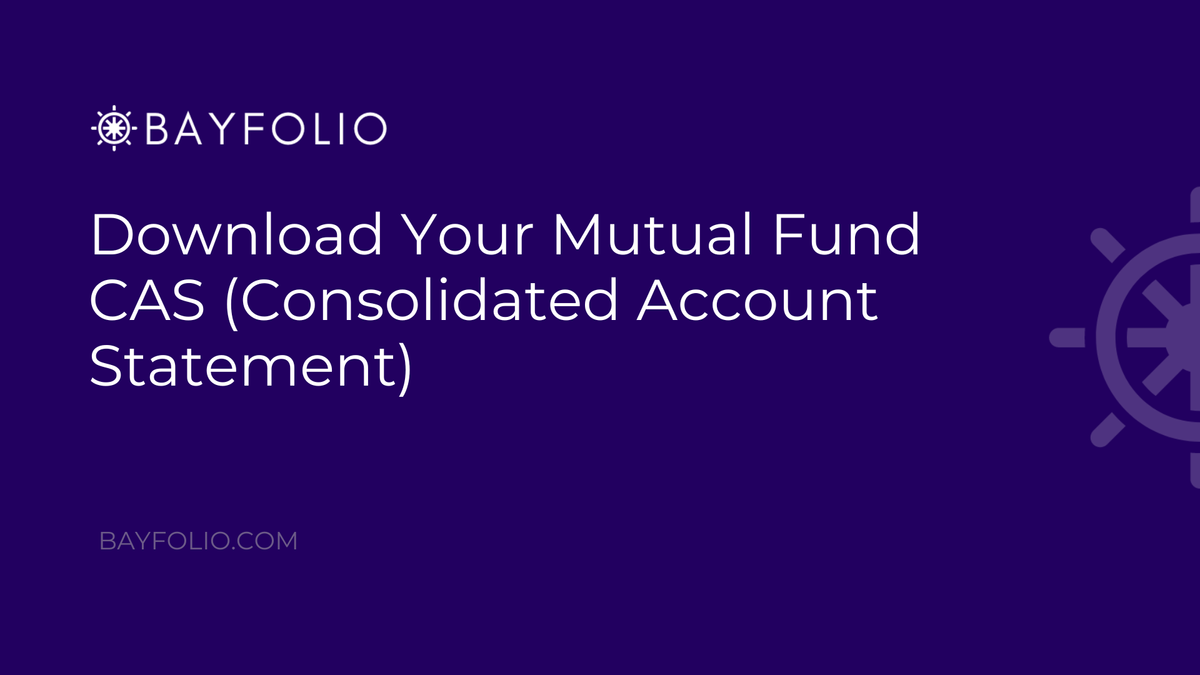Mutual Funds Holding Explained: Demat with CDSL/NSDL v/s Registrar Records by CAMS & KFintech
Mutual funds in India can be stored either in electronic (DEMAT) form or as a Statement of Account (SOA). As you might be aware, we prefer the more universal format of SOA.
But there are a couple of players at work, you may hear their names: CDSL, NSDL, CAMS & KFintech.
Let's break it down for you.
The two players are:
- Depository Participants (DPs) i.e. CDSL & NSDL
- Registrar Transfer Agents (RTAs) i.e. CAMS & KFintech
CDSL (Central Depository Services Limited) and NSDL (National Securities Depository Limited) are two government-registered securities depositories (started in 1990s) that allow investors to hold their investments in dematerialized (non physical) format.
These investments may include stocks, bonds and even mutual funds. These demat accounts are typically created by banks and brokerages. CDSL primarily operates with the Bombay Stock Exchange (BSE) who is also a shareholder. NSDL primarily operates with the National Stock Exchange (NSE) who is also a shareholder. Both are SEBI regulated.
CAMS (Computer Age Management Services) and KFintech are the main registrar and transfer agents (RTAs) that maintain investor records and process transactions for ALL mutual funds in India, whether held in DEMAT or SOA mode - they can handle both. They work directly with the Asset Management Companies i.e. mutual fund companies to maintain the records. Both are SEBI regulated. They have split the workload between themselves, so half the AMCs are with CAMS and the other half are with KFintech.
So where are your mutual funds stored?
It can be one of the two:
- Statement of Account (SOA): This is the universal format - where units are recorded directly with an AMC and/or transaction records are processed by the RTAs (CAMS / KFintech).
- Demat Account (DEMAT): This is what banks & brokerages typically use - where units are held electronically via a "demat account" through registered depositories like CDSL and NSDL. This format, allows you to see not just your mutual funds, but other securities like stocks, bonds etc.
Your Consolidated Account Statement aka CAS - is what brings together your investment holding records. While CAMS & KFintech have tied up to have a single CAS. CDSL and NSDL offer their own CAS statements.
If your mutual funds are in the SOA format, both CDSL and NSDL will attempt to sync with CAMS & KFintech for your holdings, and show everything in their respective statement.
But your CAMS(& Kfintech) CAS will not show your other securities, they will only show mutual funds you hold directly with the AMC i.e. mutual fund company.
What is the key difference, and which is better?
- SOA mode has features like redemption in fractional rupees - where investors can redeem mutual funds by specifying the exact rupee amount, including fractional units, providing more flexibility.
- Systematic Withdrawal Plan (SWP), and Systematic Transfer Plan (STP) are only supported in SOA mode, and not supported in DEMAT mode.
- However - under SOA mode - nomination and updates are done per AMC folio (which is why we also try to use 1 folio for 1 AMC), requiring separate maintenance for each fund. Unlike in in DEMAT, where it can be done at the account level. This is both a pro & con, because you gain more flexibility at the folio level if required. e.g. you can have a specific folio for one nominee, and another folio with another nominee.
What is Advisor / Distributor Code Mapping & where is it stored?
Advisor / Distributor code mapping in mutual funds refers to the process of linking or assigning a unique code - the ARN (AMFI Registration Number) - of a mutual fund advisor or distributor. This mapping is crucial for regulatory compliance, transparency, and ensuring that the right advisor is attributed to a client's investment for proper service responsibility and commission tracking. This ensures that only certified and regulated professionals handle investments, reducing the risk of fraud or mis-selling. You will find this code in your CAMS (& KFintech) CAS statement, against each folio.
Further reading (if required):



Member discussion